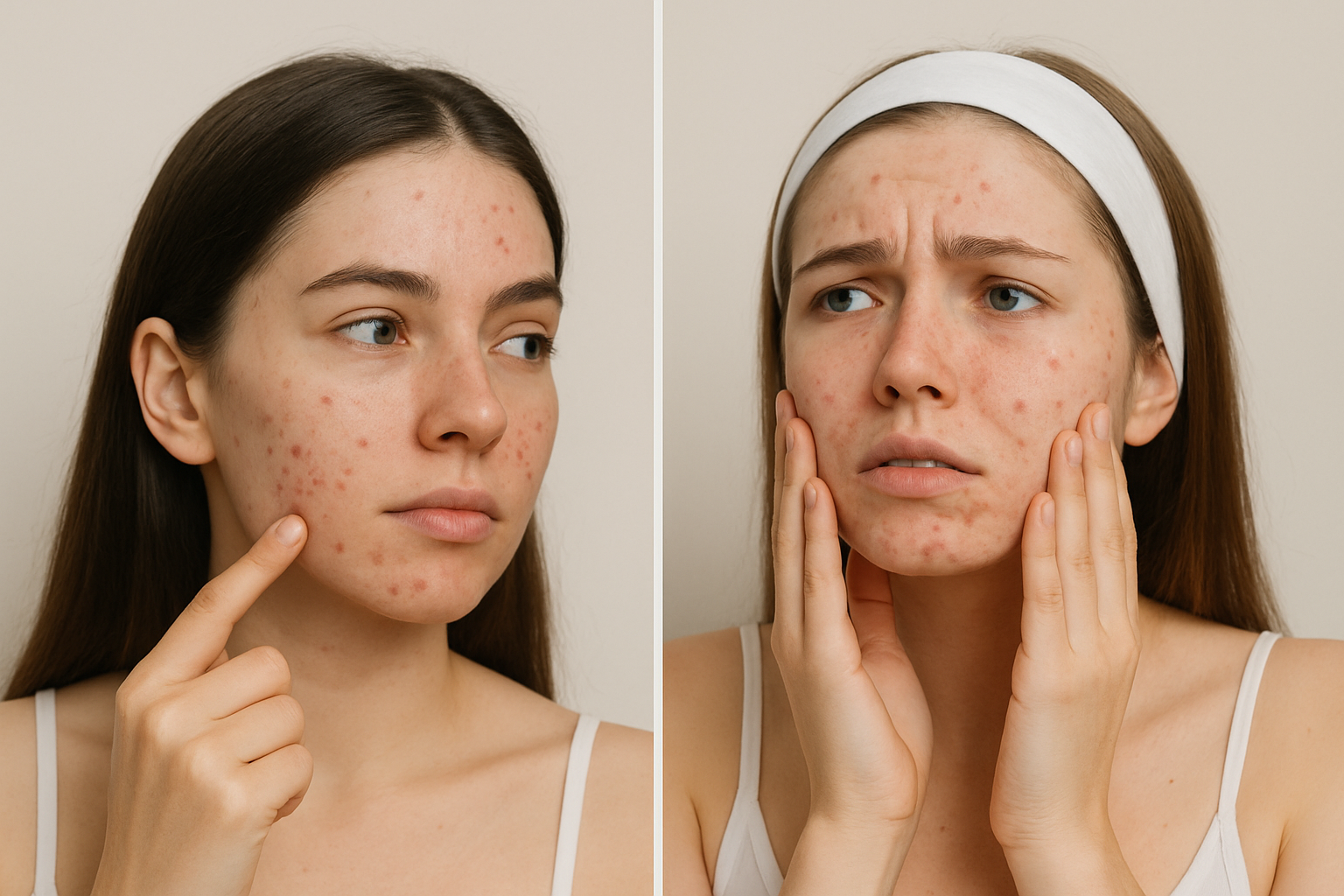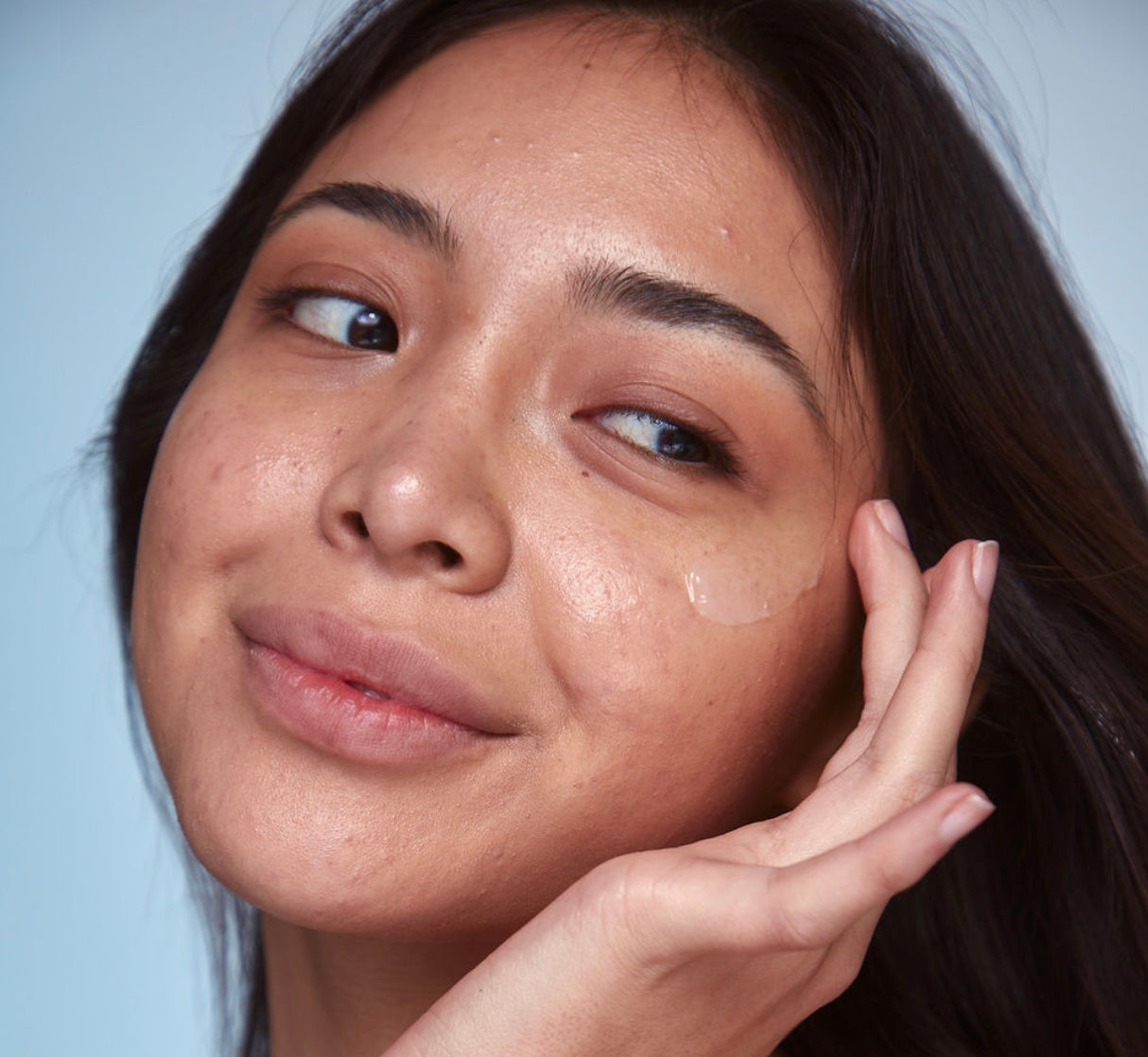
Purging vs Breakouts - when to stop using your skincare
You’ve just started a new serum or retinoid and suddenly your skin breaks out. Is this just purging (a temporary stage of adjustment) or a true breakout that means the product isn’t right for you?
This guide breaks down purging vs breakouts in plain terms, explains how long purging usually lasts, and helps you know when to keep going or when to stop a product. We’ll also share lessons from real experience and dermatologist-backed advice.

What is the difference between purging and a breakout? Both of these include a sudden occurrence of acne on your skin. Acne occurs when your pores become blocked with dead skin cells, sebum and bacteria.
Purging isn't a scientific term, but is commonly used to describe a period of time where your skin goes through a breakout while adjusting to a new skincare product. Purging can be quite common especially with products that contain certain actives in them that help boost skin cell turnover. Your skin cycle renews about every month, but certain actives can speed this up - which will in turn bring up any microcomedones (acne invisible under the skin) to the surface much quicker than it normally would. Here are some actives and treatments that speed up cell turnover and may cause a purging reaction:
- Retinoids (Retinol, Adapalene, Tretinoin, any Vitamin A derivative)
- Alpha Hydroxy Acids (AHA)
- Beta Hydroxy Acids (BHA)
- Vitamin C
- Microdermabrasion
- Lasers
- Microneedling
- Physical exfoliation
- Chemical peels
Purging doesn't always happen when using or doing these treatments, however often times it can mean that the product you are using is working effectively at speeding up cell turnover which may help improve skin texture, hyperpigmentation and smooth out fine lines and wrinkles.
| Feature | Purging | Breakout |
|---|
| Trigger | Actives that increase cell turnover (retinoids, acids) | Irritation, clogged pores, wrong product |
| Timing | Begins soon after starting a new active | Can appear anytime |
| Duration | 4–8 weeks max | Indefinite until trigger removed |
| Location | In your usual breakout zones | Often in new zones |
| Outcome | Gradual clearing after initial flare | Worsening or spreading |

How long does purging last?
Purging often lasts about 4–8 weeks, depending on the active, your skin type, and how frequently you use it. Some people see improvement within 2–3 weeks, while others take closer to 2 months. If your breakouts persist past 8 weeks without signs of improvement, it’s unlikely to be purging.
A quick rule of thumb: if you’re breaking out only in your usual zones (like jawline or forehead), it may be purging. If acne appears in new areas you never break out in, that’s usually a breakout — meaning the product isn’t right for your skin.
Know when to call it quits
It's important to stick with the product for at least 4 weeks before deciding on quitting it. If you see no improvements after 6 weeks and have been breaking out nonstop, stop using the product altogether.
As someone with acne-prone skin myself, I have been prescribed Adapalene (aka Differin) by a dermatologist. Differin is a retinoid that speeds up cell turnover and in theory is great for people with acne. I remember using Differin religiously for over 12 weeks (yes, 3 whole months) and my skin just kept getting worse and worse. I naively didn't see my dermatologist because I assumed this purging stage was normal and it would eventually get better. I ended up going to a different dermatologist after 12 weeks who told me that I should have stopped using it if my skin saw no improvement after 6 weeks. I was left with lots of scarring and hyperpigmentation (PIE), which could have been avoided had I stopped using Differin earlier.
Lessons learned
- give an active ample time to work (~4 weeks)
- monitor your skin's condition closely
- stop using the product if you've seen no improvement/worsening of acne after 6 weeks of continuous use
- getting acne where you normally don't get it? > likely a breakout, not purging
- getting acne while using a new product without actives that speed up skin cell turnover/exfoliate? > likely a breakout, not purging
- Do not overwhelm your skin with multiple new actives at the same time. Introduce one first and introduce it slowly by using it once every few days instead of daily.

How to support your skin during purging
-
Use a gentle, pH-balanced cleanser
-
Moisturize with barrier-repair ingredients (ceramides, niacinamide)
-
Don’t overload your skin with other strong actives
-
Wear sunscreen daily to prevent scarring and dark spots




3 comments
I’ve been using differine for over 5 months and my acne only seems to be getting worse , my pores have gotten bigger and my cheeks are always itchy and red should I stop or continue
Sofia
I just started using differen gel and i noticed some breakouts on my cheeks and noticed that my acne has gotten worse. what do i do
london
I use adapelene 2 month but I still purging why?what can I do
Rafia sinin
Leave a comment
This site is protected by hCaptcha and the hCaptcha Privacy Policy and Terms of Service apply.